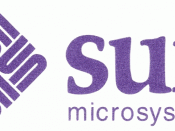OVERVIEW OF SECTION 2 OF THE SHERMAN ACT AND ITS APPLICATION TO MICROSOFT A great deal of the public discussion concerning Microsoft seems to assume that, because Microsoft has been highly profitable and has engaged in various practices that have placed a number of rivals under intense competitive pressure, the company is fair game for whatever "remedies" the Department of Justice might choose to impose. In fact, however, the Department's power to impose remedies on Microsoft is dependent on its ability to establish in court that Microsoft has violated section 2 of the Sherman Act. Specifically, the Department must prove not only that Microsoft has monopoly power but also that Microsoft has acquired or maintained that power through "exclusionary" or "predatory" acts.
In light of those legal requirements, there simply is no sound basis for a section 2 suit against Microsoft. The various theories that have been advanced by Microsoft's detractors as grounds for a section 2 suit would require a radical departure from existing case law.
In effect, the law's current focus on consumers and innovation would have to be diverted to protection of competitors at the expense of consumers. Moreover, those theories would require courts to second-guess Microsoft's product design and distribution efforts - a task that the courts are simply not equipped to perform. And, even if the Department could persuade the courts to transform the antitrust laws so radically, any remedy that the Department might seek to impose would inevitably be highly regulatory and would almost certainly reduce consumer welfare and impede innovation.
I. Section 2 of the Sherman Act and "Monopolization" As the Supreme Court has stated, "Congress designed the Sherman Act as a 'consumer welfare prescription.'" Reiter v. Sonotone Corp., 442 U.S.
330, 343 (1979), quoting R. Bork, The Antitrust Paradox 66 (1978). In...


